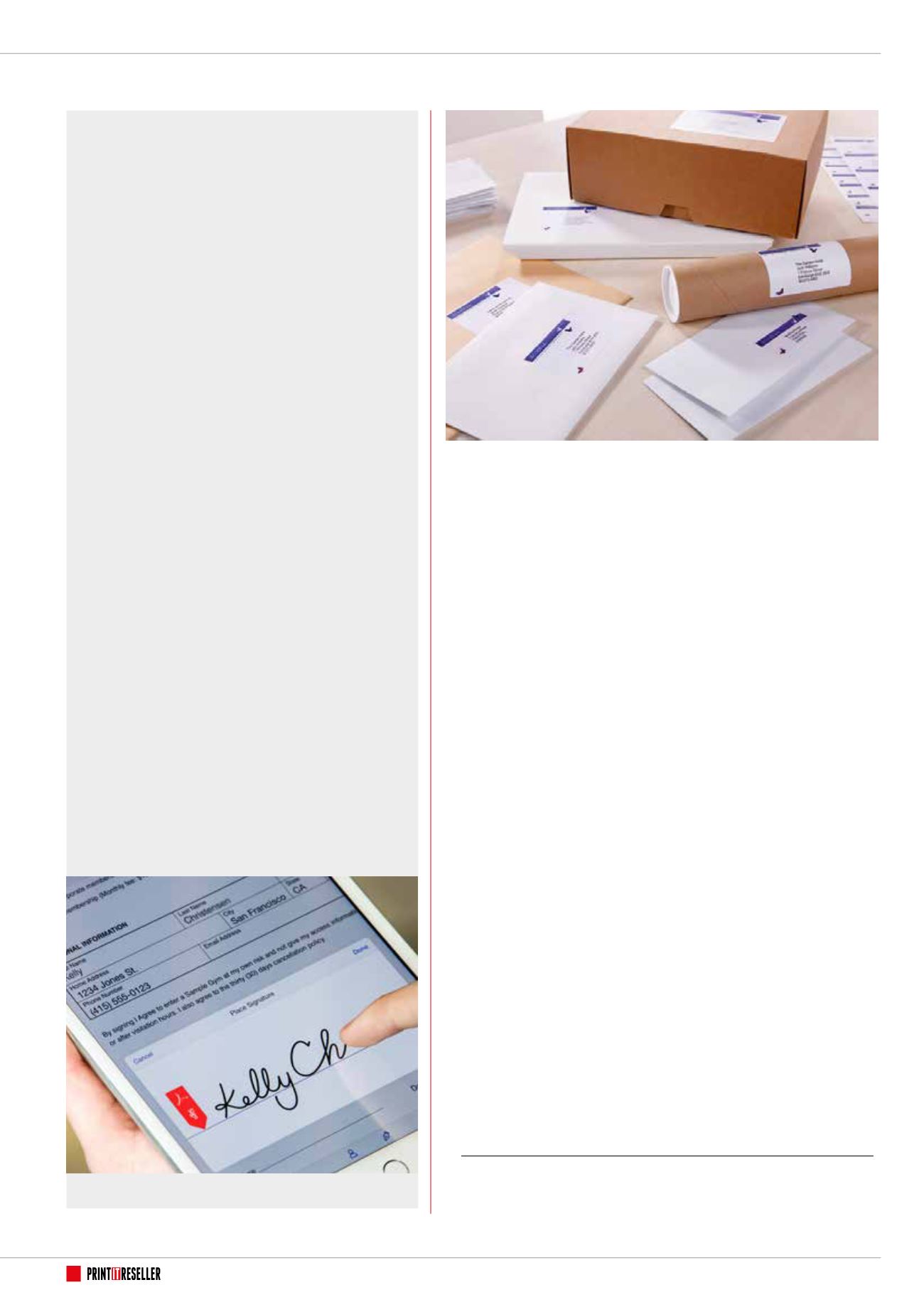
22
01732 759725
DOCUMENT WORKFLOW
...continued
Not everyone prefers digital communications. As this selection
of recent research findings show, there are many occasions
when, and reasons why, a posted letter is still the best option
l
7 out of 10 people prefer to receive legal or banking information in the form of
a letter. Just over one quarter of us are happy to receive such information via
email. Less than 1% think a phone call or text message appropriate for formal
communications.
1
l
Almost 50% of people prefer to receive sales information via a letter or brochure,
closely followed by email, cited by 42.8%. Less than 7% like to receive sales
information face-to-face.
1
l
Mail has a greater impact on the area of the brain associated with long-term
memory, indicating that printed communications are more memorable. Mail has a
32% more powerful effect than email on long-term memory encoding (LTME) – one
of the key metrics for advertising effectiveness – and a 72% greater impact than
TV.
2
l
Mail also has a higher neuroscience engagement measure than other media,
suggesting that people interact with mail and absorb its messages in a largely
unconscious way. The neuroscience engagement measure for mail is 33% higher
than for email and 60% higher than for television.
2
l
People value something 24% more highly when they can see and touch it rather
than just see it.
2
l
A majority (57%) say that receiving mail makes them feel more valued; only 17%
feel the same about email.
2
l
Almost two thirds (63%) of consumers take mail more seriously than email.
2
l
People who receive bank statements through the post are more than twice as
likely to correctly identify how much money is in their account as those who receive
statements online (82% vs 32%).
3
l
Direct marketing campaigns that include mail are 27% more likely to deliver top-
ranking sales performance, and 40% more likely to deliver top-ranking customer
acquisition levels than campaigns without mail.
4
l
An average of 23% of all mail is shared between people in a household. 21% of
promotions and special offers are shared.
2
l
Mail is kept in a household for an average of 17 days for advertising mail, 38 days
for door drops and 45 days for bills and statements.
2
1.Avery
2. Royal Mail MarketReach,The Private Life of Mail
3. Keep Me Posted, London Economics, Managing Money Online
4. IPA Effectiveness Awards Databank
Reasons to love mail
Wet ink signatures
still a major cause
of printing
Free e-signing services with every subscription
to Adobe Document Cloud is likely to be a major
attraction as the need to add a signature to a
document remains a major cause of printing.
According to research by ARX, a leading provider of digital
signature solutions recently acquired by DocuSign, more than
one third of all printed documents are printed for the sole
purpose of adding a signature.
The study by American City & County analysed practices
in US local and state government, but its findings will strike a
chord with readers on this side of the Pond:
• 37% of all printed documents are printed for the sole
purpose of adding signatures;
• Nearly 30% of respondents say that more than half the
documents they print are output solely so that they can be
signed;
• 42% of survey respondents say that collecting traditional
signatures using pen and paper delays each signature-
dependent process by 2-7 days. For some, the delays are even
longer;
• 32% of all respondents are already either using digital
signatures or are planning to do so; nearly 50% more say they
see the need for them in their organisation;
• 95% of those already using digital signatures have seen
efficiency increases and 85% have seen shorter turnaround
times on signature-dependent documents.
The factors that are most important to respondents when
selecting a digital signature solution include security and
integrity of sensitive data (88%); ease of use (84%); control
over user management/governance policies (82%); and ease of
implementation (79%).
The main reservations relate to security, control, integrity
and location of sensitive data (77%); acceptance/legality of
digital signatures (74%); and compliance with regulations/audit
requirements (63%).
e-signing with Adobe Document Cloud


